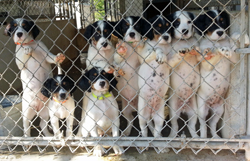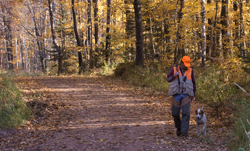Reading your dog’s stress signals
Dogs can’t talk yet they constantly communicate using their body. From nature’s perspective, it can be vital. Dogs convey their moods and intentions to others in their pack to avoid conflict but also for communication and cooperation.
Turid Rugaas is a Norwegian dog trainer who called these body expressions “calming signals.” In her fascinating book, On Talking Terms with Dogs: Calming Signals, she identified more than 30 calming signals.
Many of these signals are used singly or in a combination and with both people and other dogs. While dogs understand and interpret their meaning, the signals can be misunderstood by people.
Here are some of the more frequent signals Betsy and I see.
Shake off
Dogs shake for various reasons but a shake off is done shortly after the dog has felt stress. For instance, two dogs meet and stand stiff legged, sniffing each other. Once they figure out their relationship, they turn away and shake.
It also happens when puppies are playing and it gets too rough. One puppy yelps and moves away, followed by a shake off.
We also see it during training sessions. Dogs shake off after being released from a command or after the lesson is over. It can be stressful for dogs to learn a new command but once they’re confident in the behavior, they will no longer need to do a shake off.
Yawning
This signal is easily seen when picking up tiny puppies from the whelping nest. Betsy and I had thought we simply woke them up but now we know better!
Ground sniffing and sitting
When dogs are being WHOA trained, they often feel stress and exhibit these two common signals that are extremely undesirable. Knowing the reason for that stress, we now to respond in a more suitable and helpful manner. We shorten the length of time we ask the dogs to stand and then release them before these signals are expressed. (Timing is everything!) Gradually, as the dogs gain confidence, we ask them to stand for longer and longer periods of time.
Laying down with belly against the ground
While submissive dogs often lie with belly up, dogs that lay down on their bellies are exhibiting a calming signal.
Paying attention to what your dog is communicating via body language will lead to a better relationship and will help both in the day–to-day routine and when training and hunting.
For more information on calming signals visit http://en.turid-rugaas.no/calming-signals—the-art-of-survival.html





